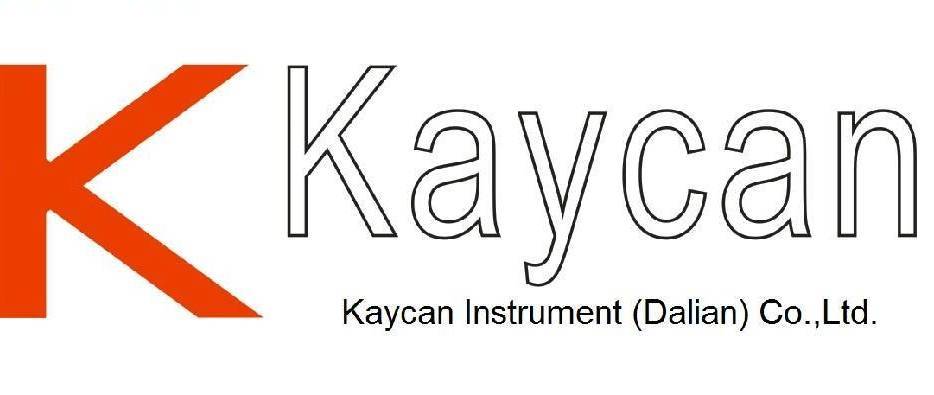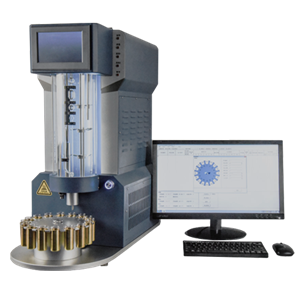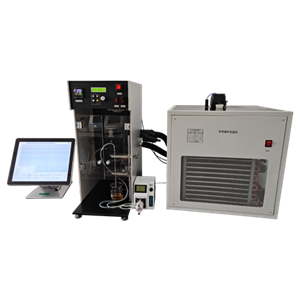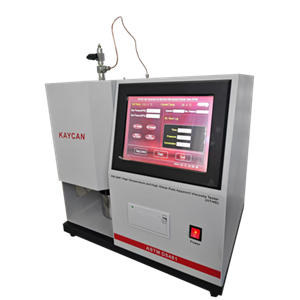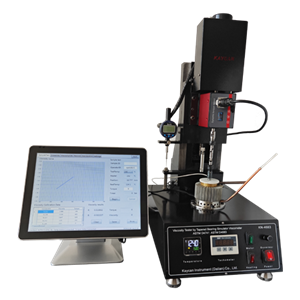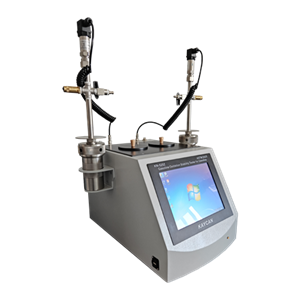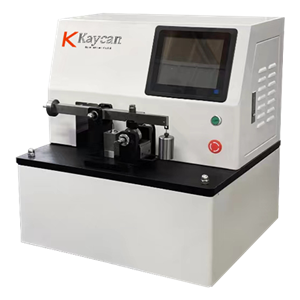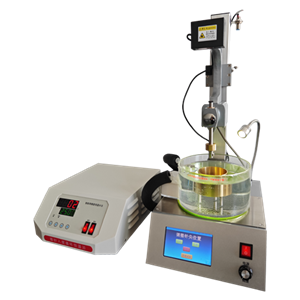-
ASTM D56 Tag Closed Cup Flash Point Tester
this apparatus conforms to ASTM D56 Standard Test Method for Flash Point by Tag Closed Cup Tester, it is used for flash point determinations of liquids with a viscosity of below 5.5 centistokes (cSt) at 104℉ (40℃) or below 9.5cSt at 77℉ (25℃),
Send Email Details -
ASTM D5293 Apparent Viscosity By Cold Cranking Simulator CCS
The CCS apparent viscosity of automotive engine oils correlates with low temperature engine cranking. CCS apparent viscosity is not suitable for predicting low temperature flow to the engine oil pump and oil distribution system. Engine cranking data were measured by the Coordinating Research CouncilThe measurement of the cranking viscosity of base stocks is typically done to determine their suitability for use in engine oil formulations. A significant number of the calibration oils for this met
Send Email Details -
ASTM D5293 Automatic Apparent Viscosity By Cold Cranking Simulator CCS
The CCS apparent viscosity of automotive engine oils correlates with low temperature engine cranking. CCS apparent viscosity is not suitable for predicting low temperature flow to the engine oil pump and oil distribution system. Engine cranking data were measured by the Coordinating Research CouncilThe measurement of the cranking viscosity of base stocks is typically done to determine their suitability for use in engine oil formulations. A significant number of the calibration oils for this met
Send Email Details -
ASTM D5481 Apparent Viscosity At High Temperature And High Shear Rate By Multicell Capillary Viscometer HTHS
High-Temperature and High-Shear Rate Apparent Viscosity Tester (HTHS) covers the laboratory determination of high-temperature high-shear (HTHS) viscosity of engine oil at a temperature of 150℃ using a multicell capillary viscometer containing pressure, temperature, and timing instrumentation. The shear rate for this test method corresponds to an apparent shear rate at the wall of 1.4 million reciprocal seconds (1.4 3 106s-1).This shear rate has been found to decrease the discrepancy between this
Send Email Details -
ASTM D525 Automatic Gasoline Oxidation Stability Tester
The induction period may be used as an indication of the tendency of motor gasoline to form gum in storage. It should be recognized, however, that its correlation with the formation of gum in storage may vary markedly under different storage conditions and with different gasolines
Send Email Details -
Hot
ASTM D5800 Evaporation Loss Of Lubricating Oils By The Noack Method
The evaporation loss is of particular importance in engine lubrication. Where high temperatures occur, portions of an oil can evaporate. Evaporation may contribute to oil consumption in an engine and can lead to a change in the properties of an oil. Many engine manufacturers specify a maximum allowable evaporation loss. Some engine manufacturers, when specifying a maximum allowable evaporation loss, quote this test method along with the specifications.
Send Email Details -
ASTM D5001 Ball-on-Cylinder Lubricity Evaluator (BOCLE)
KN-5001 Ball-on-Cylinder Lubricity Evaluator (BOCLE) conforms to ASTM D5001 Standard Test Method for Measurement of Lubricity of Aviation Turbine Fuels by the Ball-on-Cylinder Lubricity Evaluator (BOCLE) and ASTM D6078 Standard Test Method for Evaluating Lubricity of Diesel Fuels by the Scuffing Load Ball-on-Cylinder Lubricity Evaluator (SLBOCLE).. The fluid under test is placed in a test reservoir in which atmospheric air is maintained at 10% relative humidity. A non-rotating steel ball is held in a vertically mounted chuck and forced against the outside diameter of an axially mounted cylindrical steel ring with an applied load. The test ring is rotated at a fixed speed while being partially immersed in the fluid reservoir. This maintains the ring in a wet condition and continuously transports the test fluid to the ball/ring interface. The wear scar generated on the test ball is a measure of the lubricating property of the fluid.
Send Email Details -
ASTM D5 Penetration Of Bituminous Materials
the penetration test is used as a measure of consistency.higher values of penetration indicate softer cnssistency
Send Email Details
